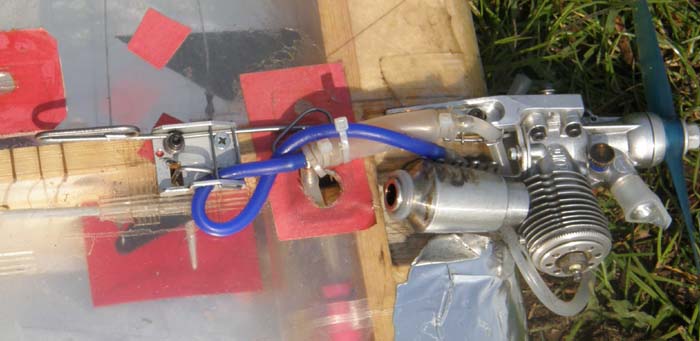Shut-off for F2D-Combat
Line tension shut-off with delay
|
Last update: 26/5 2009
Shut-off with delay. Ready for the "Hard Core Rules"
|
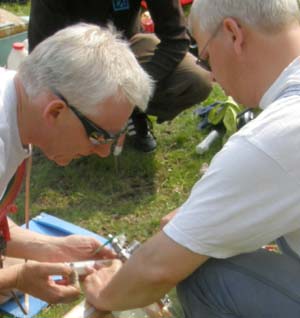 Henning Forbech and Bjarne Schou |
|
|
A moving bellcrank shut-off that will be armed after start by a mini swingarm seems to be a good solution for a shut-off system. - But there is a problem!!! The problem is that the shut-off will not only be blocked on launce but also for a short period after takeoff. The system will arm as soon as the line tension and the centripetal acceleration build up. The rule book does not allow the shut-off to be blocked at any time at all. "The device must remain functional for the entire flight period .." (4.4.5). This rule is very clear and there is no doubt that flying with a blocked shut-off can not be allowed. Even to fly a few meters flight right after take-off with a blocked system is prohibited and should not be allowed. If a pilot uses a system that is blocked after take-off he may be disqualified. If his opponent or any other pilot puts in a protest on this blocked shut-off they will have a good chance of putting that pilot out of the competition. To avoid these problems you have to use a shut-off system that is always active.
An easy way to determine if your system is blocked is to see what will happen if the pitman lets off the model without a pilot at the handle or even without any lines at all.
You might find that a pitman letting off a model without the pilot at the handle is an extreme situation.
Unfortunately it is more common than one would think. It happened at the World Champs in France last summer and at the competition in
Phoenix this spring.
The practical problem with an always active system, based on line tension, is to keep the engine running long enough to get the model flying. Another solution could be to make the shut-off react slower. If there was a delay from the moment the line tension turns low to the moment the fuel supply is stopped the engine would be able to run just long enough to build up enough flying speed to re-establish the fuel supply. This slow reaction - or delay - in the shut-off system will not cause problems with the rules. All systems will have some reaction time and there is no time limit in the rules. The delay that is necessary to take-off with a line tension based shut-off is about half a second if the shut-off line tension is set to 10 Newton. This delay can be made by inserting a small reservoir between the shut off valve and the engine. The reservoir can be made by replacing some of the fuel line with a piece of latex tube. At the World Cup competition in Bitterfeld, Germany, both Bjarne Schou and I were using shut-off systems with a delay function based on a small reservoir.
The system I used was based on my "2009 system" but without the activation mechanism (the mini swing-arm). This slower reaction from the shut-off in the event of a fly-away will reduce the safety benefits from the mandatory shut off systems. A model that is cut loose of the lines will fly a little longer and will be more dangerous to pitmen and officials close to the circle. Now I am working on a new design for a reservoir system with a delay that is only active at take off. This new delay system would allow a model to get airborne with a shut-off system that is always active. When the model is in the air this system will have no delay and will react as fast as the "old" system that was blocked during the take off.
I know that a " Clarification" was sent out last year.
I find that this clarification is quite problematic and to avoid all the discussions and problems it might curse I have chosen to use a shut-off that
will full fill the "Hard Core Rules" in the rule book. More information on the rules for shut-off systems and the clarification can be found here.
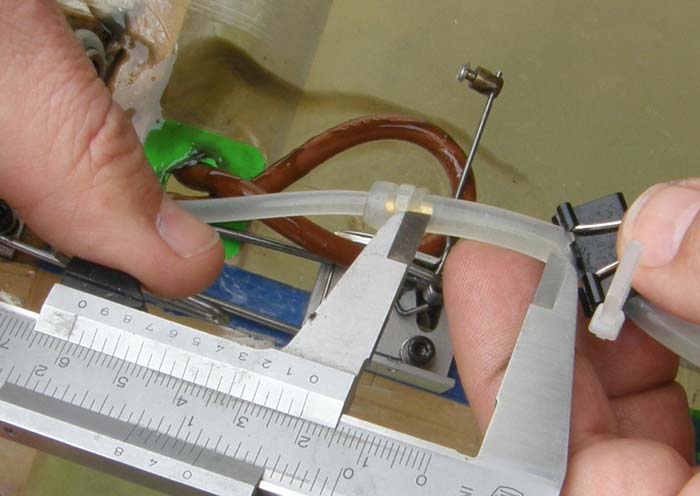 First version of the reservoir was made from silicone tubing. Now we are using latex. 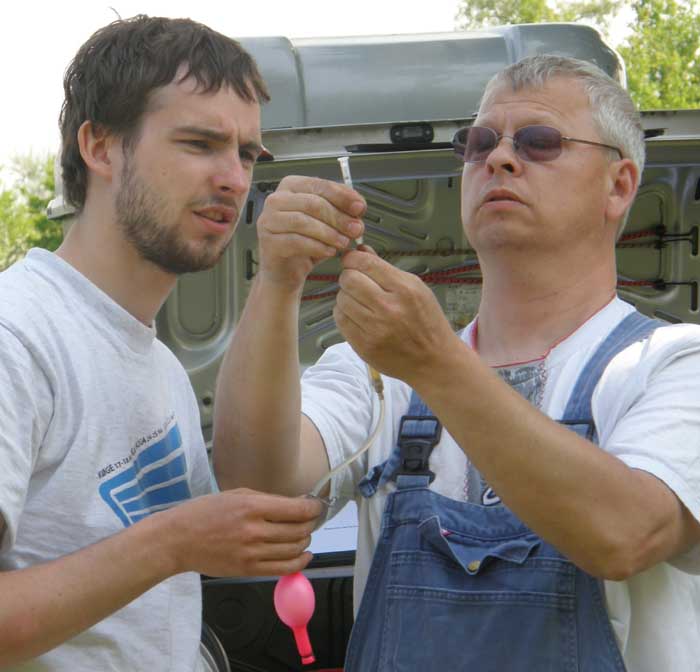 Bjarne Shou and André Bertelsen adjusting the volume of the reservoir 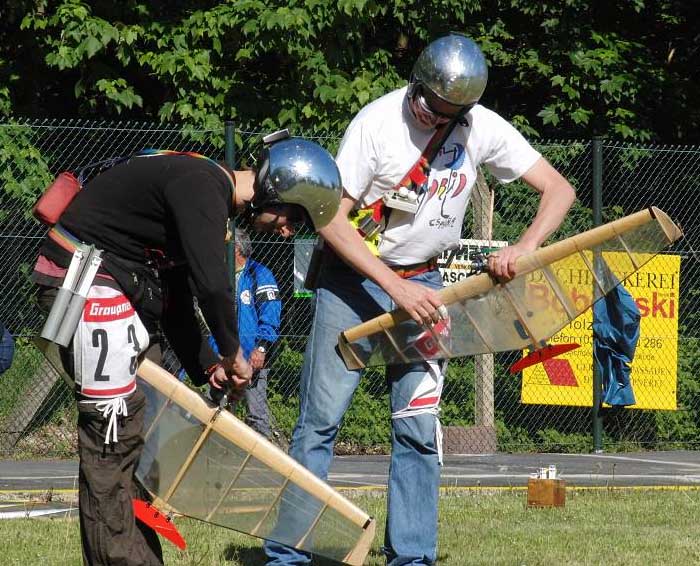 André Bertelsen and Henning Forbech preparing models for Bjarne Schou. Bitterfeld 2009. 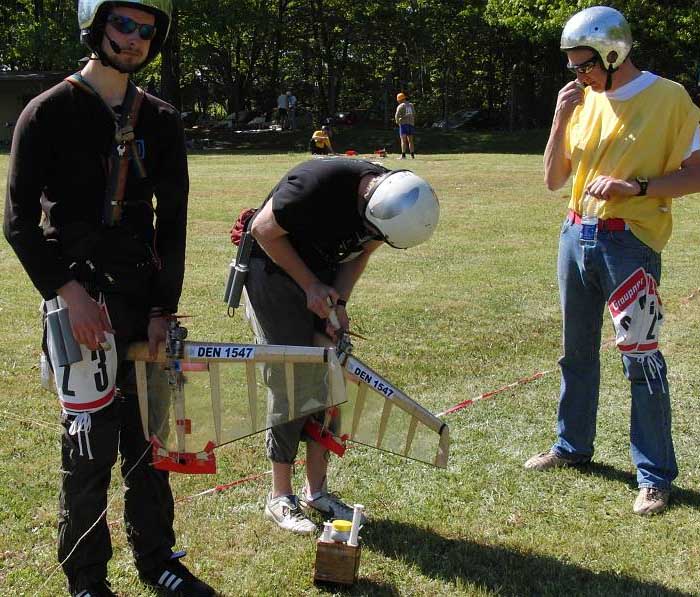 The Danish team for Serbia: André Bertelsen, Anders Kudsk and Henning Forbech.
Test flight: |
||
--= Back 1 2 3 4 5 6 7 8 9 10 11 12 13 14 15 16 17 18 19 20 21 22 23 24 25 26 27 28 29 30 31 32 33 34 35 36 37 38 39 40 41 42 43 44 45 46 47 48 49 50 Next =--
Shut-off start - F2D.dk
